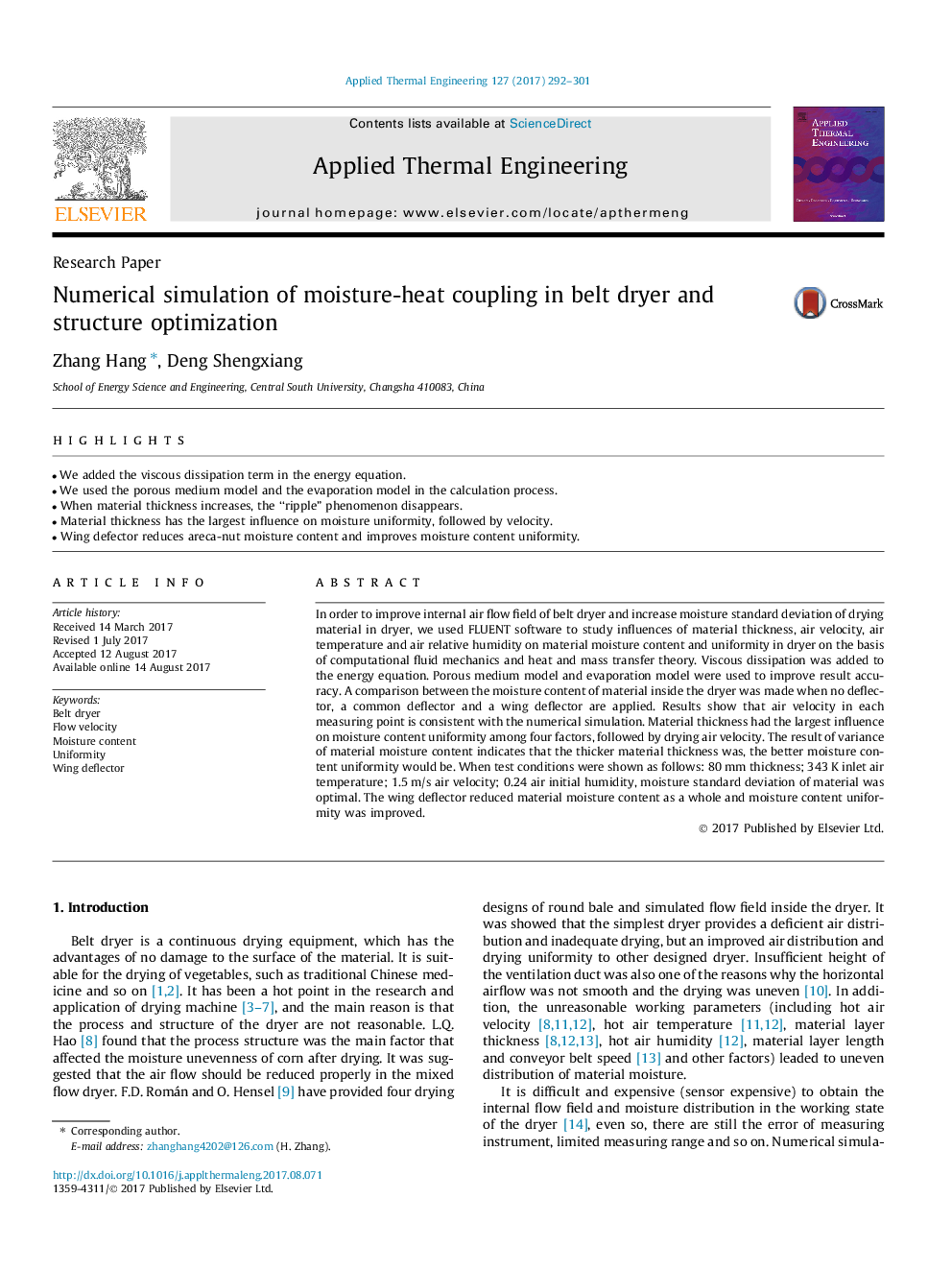| Article ID | Journal | Published Year | Pages | File Type |
|---|---|---|---|---|
| 4990719 | Applied Thermal Engineering | 2017 | 10 Pages |
Abstract
In order to improve internal air flow field of belt dryer and increase moisture standard deviation of drying material in dryer, we used FLUENT software to study influences of material thickness, air velocity, air temperature and air relative humidity on material moisture content and uniformity in dryer on the basis of computational fluid mechanics and heat and mass transfer theory. Viscous dissipation was added to the energy equation. Porous medium model and evaporation model were used to improve result accuracy. A comparison between the moisture content of material inside the dryer was made when no deflector, a common deflector and a wing deflector are applied. Results show that air velocity in each measuring point is consistent with the numerical simulation. Material thickness had the largest influence on moisture content uniformity among four factors, followed by drying air velocity. The result of variance of material moisture content indicates that the thicker material thickness was, the better moisture content uniformity would be. When test conditions were shown as follows: 80Â mm thickness; 343Â K inlet air temperature; 1.5Â m/s air velocity; 0.24 air initial humidity, moisture standard deviation of material was optimal. The wing deflector reduced material moisture content as a whole and moisture content uniformity was improved.
Related Topics
Physical Sciences and Engineering
Chemical Engineering
Fluid Flow and Transfer Processes
Authors
Zhang Hang, Deng Shengxiang,
